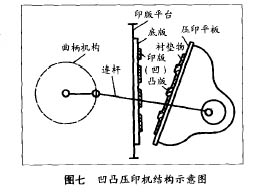1 31. What are the disadvantages of embossing and printing the traditional gypsum tanning technique? The traditional gypsum replication punching process is complicated and time-consuming, and all of them are pre-made concave stencils, and then copied on the spot on the embossing machine, reducing the speed. Because the strength of the gypsum is low, as the embossing continues, the gypsum is exacerbated by the extrusion. Due to the above reasons. It is imperative to seek a new material with good mechanical strength and rapid and convenient molding. 132. Why choose PVC material as a new process material for prefabricated punch? After comparing various properties of various thermoplastics such as viscous flow temperature, elastic modulus, toughness, and adhesive strength of rubber-based adhesives, it is considered that both polyvinyl chloride and polystyrene are ideal materials. However, because the latter is fragile and inconvenient to cut, PVC has been chosen. This material is richer and more affordable than polystyrene. 133. What is the manufacturing process of prefabricated convex and convex touches? After the plastic sheet is overlapped with the mold, it is put into a press with a heating and cooling system. By adjusting the temperature and pressure, the product with the same shape as that of the mold is obtained, and the steps are as follows: 1 surface cleaning. The surface of the cut polyvinyl chloride board is cleaned to remove the hair spots, oil stains, and also to clean the die and the mold frame, generally using a detergent or a weak acid (alkali) liquid. 2 coated release agent. In the concave stencil, the contact surface of the PVC plate is coated with a mold release agent, and silicone grease, silicone oil, and a mixture thereof are commonly used. 3 framed on the machine. The concave mold polyvinyl chloride board is put into the mold frame, covered with a cover plate, and then fed into a molding machine. Note that there should be an appropriate gap between the mold cavity and the frame wall so that the excess molten material liquid can flow out. 4 temperature and pressure. Appropriate pressurization before warming to close the pressed object, when the temperature reaches a predetermined value after the pressurization, the pressure should be based on the layout size, pattern depth, line thickness changes, generally 9.8 ~ 29.4MPa (1 O0 -3000kgf/cm ). 1 34. Prefabricated embossing punch stamping method is what? The new punch is fixed on the embossing machine with double-sided adhesive tape. The specific method uses a flat pressing hot stamping machine as an example: 1 Fixed negative template. The negative stencil is fixed to a larger aluminum plate with double-sided tape, and the aluminum plate is positioned on the hot plate with screws. Note that the center of gravity of the negative plate pattern should be on the central axis of the hot plate to balance the pressure; 2 Paste double-sided tape. Cut the double-sided tape and paste it on the back of the new punch. Note that the double-sided adhesive at the four corners of the punch should be properly cut off at four corners; 3 Fit punch. Fit the new punch on the negative plate and fix the four corners with glass glue; 4 punch transfer fixed. Turn on the tablet and turn it on. Under pressure, the new punch is fixed on the plate by double-sided adhesive transfer, and the loading is completed. 1 Molding temperature and pressure. The temperature is too low, the strength of the punch is poor, the temperature of the surface is not good, the polyvinyl chloride is degraded, and the surface is charred. The pressure is too small, the liquid cannot reach the bottom of the die, and the punch generates defects: the pressure is too large and it is easy to damage the equipment. 2 pressed punch. Its base thickness is generally controlled at O. Between 5 and 1 mm, the value is mainly determined by the depth of the mold frame and the thickness of the negative template. The thickness of the polyvinyl chloride board should be appropriate and should be changed according to the depth of the negative stencil. The female mold is deep and the polyvinyl chloride board is thick and vice versa. 3 When pressing the punch, one layer to several thin papers can be placed between the negative stencil and the polyvinyl chloride board. How much the pad can be visible The thickness, texture, pattern thickness, and depth of relief of the printed paper are determined. This will not only help mold release, but also prevent the print from breaking. 136. What are the main features of the embossing equipment? Due to the pressure required for embossing, it is advisable to use four-open or split die-cut indentation equipment. This kind of machine has only simple transmission and imprinting devices, no ink transmission settings, all parts of the castings are reinforced design, stamping plate is pulled by the dual-arm gear, the pressure of which is adjusted by the eccentric sleeve. And equipped with safety rods to protect the operator's production safety. 1:37. What types of embossing presses are used in China today? At present, China mainly uses two types of embossing and embossing machines. One is a flat pressure stamping machine (shown in Figure 7). For Konica Minolta Bizhub 164,Toner Cartridge,Bizhub 164 Toner Cartridge GS Green Tech Co., Ltd. , http://www.zhtonercartridge.com
5 cooling stripping.
135 What are the main factors affecting the quality of embossing and printing? 
One is a horizontal press horizontal press. Flat-press imprinting machine imprinting products are rich in contour levels, but their efficiency is low. The round-press horizontal press has high efficiency, but the contour level is not full.
Source: "Guangdong Printing" (author / Jin Yinhe: Beizhuang Institute of Graphic Communication)